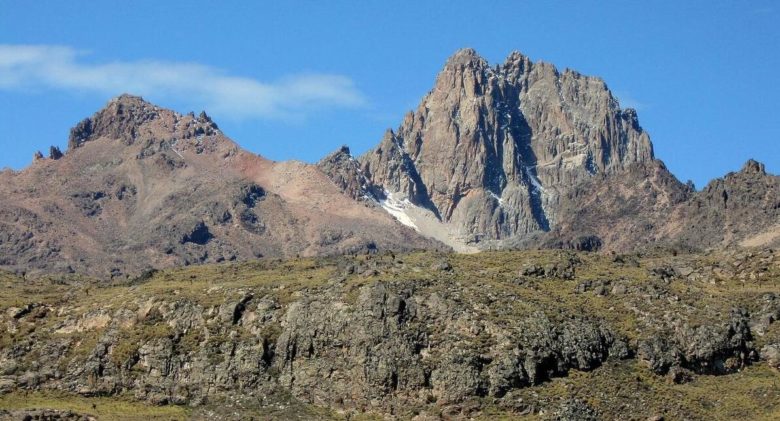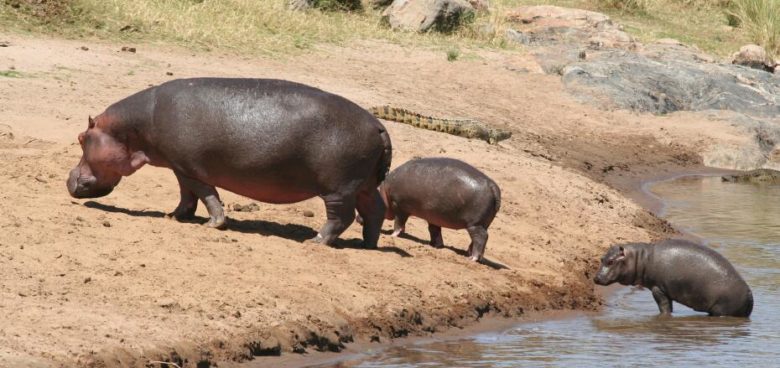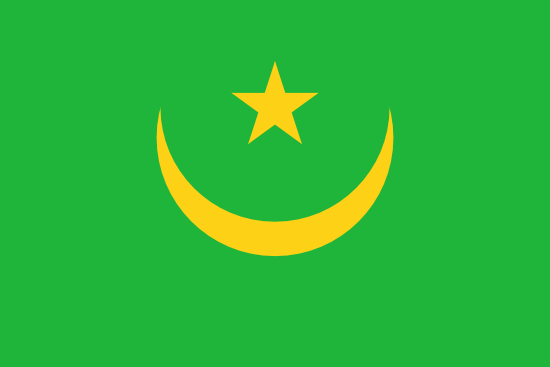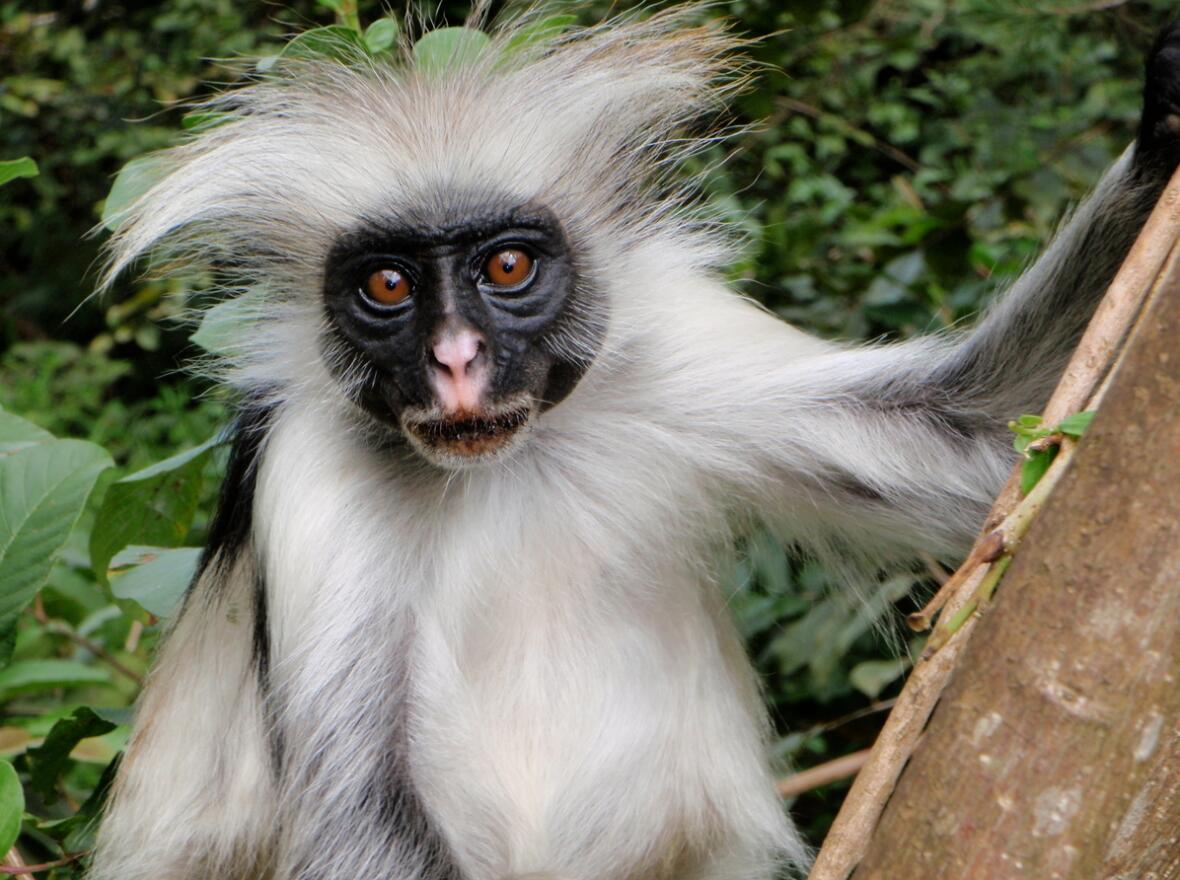Geography of Kenya
The majority of Kenya is made up of crystalline bedrock, forming large plateau masses 1000–3000 meters above sea level, the Kenyan highlands.
The highest areas consist of younger volcanic material, lava decks and volcanic cones, including the massive volcanic cones Mount Kenya (Kirinyaga, 5199 meters above sea level) in the middle of the country and Mount Elgon (4321 meters above sea level) on the border with Uganda. The highlands slopes down to the coast of the Indian Ocean in the east and north to the lowlands along the border with Ethiopia and Somalia.
The coastal zone in Kenya is swampy and about 30 kilometers wide, with beaches surrounded by coral reefs and cut-in estuaries. Off the coast are several smaller islands.
Kenya is cut in the north-south direction by the large East African search pit ( Rift Valley), a 500–1200 meter deep and 50–80 kilometers wide recess. Here are a number of drainage-free salt lakes, primarily the large Turkana lake.
A large number of tourists and the strong population density in parts of the country both represent ecological threats, including deforestation and erosion. One of the most active contributors to ecological awareness and forestry, Professor Wangara Mathai, received the Nobel Peace Prize in 2004 for his efforts.
Rift Valley
Rift Valley extends through western Kenya.
Mountain
Along the edge of the Rift Valley to the west are several of Africa’s highest mountains, such as Mount Kenya and Ngong.
Volcano Crater
The highest peaks are volcanic. Most of the mountain peaks are extinct volcanoes that form the caldera.
Rivers
Tana.
Lakes
Lake Jipe, Turkana and Lake Victoria.
Rocks
The bedrock consists essentially of Precambrian volcanoes, granites and gneisses. The highest areas consist of younger volcanic material. The soil consists of laterite and bauxite.
Bedrock
Most of the bedrock consists of Precambrian granites and gneisses that belong to the African shield.
Intrusive rocks
In the Rift Valley there are deep rocks formed by rifting, including rhombic porphyry.
Ultrabasic ash and lava
The shield volcanoes have left volcanic ash and lava during explosive eruptions from the hotspot.
National Parks
Masai Mara, Mount Kenya, Nairobi National Park and Lake Turkana National Parks.
Hippos. A hippopotamus with two calves on the banks of the Mara River in Kenya. – Twin births of hippos are rare; As a rule, the female only gets one youngster. But kids from previous litters can follow their mother and younger siblings.
Wildlife in Kenya
Numerous national parks and wildlife sanctuaries have been created to protect the extraordinary species and individual mammal population in Kenya. Best known are Amboseli, Meru, Tsavo, Masai Mara and Mt. Kenya. Elephant, pointed horn, coffee buffalo and leopard are found in open country and mountain forests. On the savannah live giraffe, zebra, warthog, lion, cheetah and hyena. 30 antelope species range from large kudu and moose to impala, the grant and thomson gas cells and the 30 cm high ditch. Hyenas, jackals, marauders, vultures and black-claws gather by donkeys. In rivers and lakes, hippos and nil crocodiles live. Tilapia species in the cichlid family form the basis for large local fisheries.
More than 1130 bird species are registered in Kenya. Pelicans, herons, cranes, stork, ducks and kingdoms live in the wetlands; There is a large flamingo colony in Lake Nakuru. Ostriches, stairs and secretary birds live in dry, open areas and find food on the ground. Many species of prey, guinea fowl, frankoliner, viper, doves, Turaco, coraciiformes, horn birds (f. Rhinoceros hornbills ) and beard birds occurs. Among passerines are whistleblowers, thrush birds,Sunbird, Estrildid Finch, weaver birds and starlings conspicuous.
The reptile fauna includes geckos, chameleons, agams, varans, hams, pythons and poison snakes such as cobras, mambas and puff additives. Grasshoppers, termites and ants characterize the insect life on the savannah. Tsetse fly and malaria mosquitoes are a permanent health threat.
Plant life in Kenya
Kenya lies in the tropical belt, but due to the mountains and the highlands there are significant variations in the climate. The annual rainfall varies greatly, but less than 1/4 of the country receives more than 750 mm. The most precipitous areas are the coastal zone and the mountains and plateaus of southern Kenya, where many places receive more than 1000 mm annually. The Rift Valley itself is sheltered with an annual rainfall of approx. 750 mm in the south which decreases to 250 mm in the north. The rainfall is modest also on the country’s inner and northern plateaus; thus only 120 mm at the border with Somalia. Most of the precipitation comes in connection with the passage of the intertropical convergence zone during the periods May-June and October-December, and most places therefore have two precipitation maxima. Temperatures vary greatly due to terrain conditions. Mombasa on the coast has 24 ° C in July and 29 ° C in March,Nairobi, which is 1800 meters high, is 15 ° C and 19 ° C. In the highlands, night frosts are common during the dry season.





